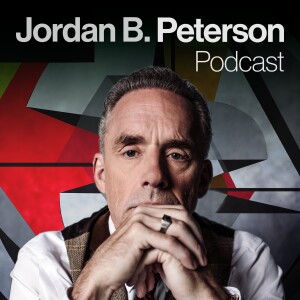
This is one of the papers from our 2017 Annual Conference, the Future of Phenomenology. Information and the full conference booklet can be found at www.britishphenomenology.org.uk
I compare how two leading French phenomenologists of the last century – Michel Henry and Henri Maldiney – interpret Kandinsky’s heritage. Henry’s phenomenology is based on a distinction between two main modes of manifestation – the ordinary one, that is, the manifestation of the world and the “manifestation of life”; for him Kandinsky’s work provides a paradigmatic example of the second, more original, mode of manifestation, which is free from all forms of self-alienation. This is why Kandinsky’s paintings do no show us anything, but rather provoke in us certain impressions, certain feelings; they should be experienced, lived through. Henry claims that this living-though of the work of art is transformative; it is a kind of ascetic practice or mystical experience that goes beyond the distinction of the subject and the object. Maldiney also recognises in Kandinsky’s work an attempt to provide an access to an a-cosmic and a-historic experience of one’s inner self; yet for Maldiney this is not a positive characteristic. For Maldiney, the key distinction is not between modes of phenomenalisation, but between two dimensions of meaning (sens): the ordinary one, that he calls “gnostic” (gnosique), and “pathic”. This pathic dimension of meaning can be reached only in a personal contact with the living-world in its nascent state. According to Maldiney, there is no radical self-transformation which is not a transformation of one’s being-in- the-world and one’s meaning of the world (and vice versa). My access to myself cannot bypass my relation to the world, and so Kandinsky’s paintings cannot induce a true transformation of self. The disagreement of Henry and Maldiney on Kandinsky doesn’t unfold on the level of the phenomenological description of the concrete aesthetic experience, but rather on the level of metaphysics.
More Episodes
Filipa Melo Lopes - ‘“Half Victim, Half Accomplice”: Cat Person and Narcissism’
 2020-12-12
2020-12-12
 326
326
Kata Dóra Kiss - ‘The Importance of Intersubjectivity in the Process of Psychotherapy’
 2020-12-05
2020-12-05
 470
470
Rachel Elliott - ‘The Futurity of the “We”: A Merleau-Pontian Account of Group Temporality and Improvised Music’
 2020-11-28
2020-11-28
 458
458
Francesca Brencio - ‘Shifting the paradigm. Neurosciences and the phenomenological challenge’
 2020-11-21
2020-11-21
 332
332
Valeria Bizzari - ‘A multidisciplinary analysis of autism: predictive engagement and the living body’
 2020-11-14
2020-11-14
 299
299
Prisca Bauer - ‘Engaged phenomenology: neurology beyond the brain’
 2020-11-07
2020-11-07
 434
434
Dan Zahavi - ‘Pure and Applied Phenomenology’
 2020-10-31
2020-10-31
 1.7k
1.7k
Luna Dolezal - Interviewed by Jessie Stanier & Hannah Berry
 2020-10-24
2020-10-24
 298
298
Keith Crome - Education as Child’s Play
 2020-08-23
2020-08-23
 373
373
Hannah Berry - Empathy: the border between narratives
 2020-08-22
2020-08-22
 323
323
Francesca Brencio - “Fill the gap”. A phenomenological perspective of exercising psychiatry
 2020-08-16
2020-08-16
 260
260
William Large - Atheism of the Word: A Genealogy of the Concept of God
 2020-08-15
2020-08-15
 236
236
Pablo Andreu - Death as an “Ontological Infidelity”
 2020-08-08
2020-08-08
 254
254
Marco Di Feo - The Human Right to Family Reunification
 2020-08-01
2020-08-01
 173
173
Botsa Katara - Reassessing the Super-crip Stereotype
 2020-07-25
2020-07-25
 199
199
Pablo Fernandez Velasco - Disorientation and Self-consciousness: A Phenomenological Inquiry
 2020-07-18
2020-07-18
 243
243
Andreas Sandner - ‘Visible Odours? On the Issue of Visuocentricism in “Olfactory Austerity”
 2020-07-11
2020-07-11
 165
165
Matteo Valdarchi - The circle and the origin. An interpretation of Heidegger's Habilitationsschrift
 2020-07-04
2020-07-04
 232
232
Katherine Burn - Recalibrating the Contemporary: Reading the phenomenology of shame in Metamodernism
 2020-06-27
2020-06-27
 228
228
Dylan Trigg - Who is the Subject of Birth?
 2020-06-20
2020-06-20
 327
327
Get your brand heard on this podcast
Join Podbean Ads Marketplace and connect with engaged listeners.
Advertise Today
Create your
podcast in
minutes
- Full-featured podcast site
- Unlimited storage and bandwidth
- Comprehensive podcast stats
- Distribute to Apple Podcasts, Spotify, and more
- Make money with your podcast
It is Free
You may also like

Mayo Clinic Talks


The Saad Truth with Dr. Saad


Positive Thinking Mind


The Jordan B. Peterson Podcast


The Mel Robbins Podcast


- Privacy Policy
- Cookie Policy
- Terms of Use
- Consent Preferences
- Copyright © 2015-2024 Podbean.com



 iOS
iOS Android
Android